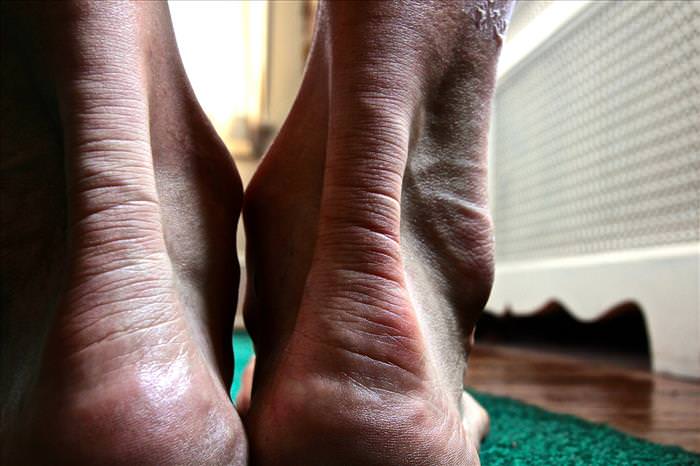THIS IS ONLY FOR INFORMATION, ALWAYS CONSULT YOUR PHYSICIAN BEFORE
HAVING ANY PARTICULAR FOOD/ MEDICATION/EXERCISE/OTHER REMEDIES.
FOR INFO ABOUT KNEE REPLACEMENT, YOU CAN VIEW MY BLOG
HTTP://KNEE REPLACEMENT-STICK CLUB.BLOGSPOT.COM/
FOR CROCHET DESIGNS- http://My Crochet Creations.blogspot.com/
This bright green veggie has
been deemed a spring superfood with good reason. It is packed with
goodness - vitamins A, C, E, K, B6 and folate, as well as essential
minerals like iron, copper, calcium, protein and fiber. In addition,
there are many ways this nutritious vegetable can be enjoyed (be sure to
take a look at our recipe tips and easy-to-prepare recipe video below).
 Here are 10 reasons why you should include more asparagus in your diet this season:
1. They may help you lose weight
Asparagus is low in fat and
calories (one cup is a mere 32 calories). It is also packed with lots of
soluble and insoluble fiber, making it a good choice if you are trying
to lose weight, primarily because your body digests fiber slowly,
helping you feel satiated in between meals. In addition, asparagus can
also aid constipation and studies have shown that it may help lower
cholesterol.
Recipe tip: Grill a couple of asparagus spears, lightly drizzle with olive oil and balsamic vinegar. Top with a perfectly poached egg.
2. They may prevent urinary tract infections
Asparagus contains the amino
acid, asparagine, making it a natural diuretic. A diet rich in asparagus
could therefore prevent urinary infections from developing as it helps
flush excess fluid and salt from the body.
Recipe tip: Sauté a bunch of fresh asparagus and 3 cloves of garlic with 3 tablespoons of butter over medium-high heat.
3. They are packed with antioxidants
Purple asparagus is packed with
anthocyanins (an antioxidant that gives this type of asparagus its
purple hue) which could help your body fight damaging free radicals.
Recipe tip:
Cook this veggie on low heat, but do not let it boil or sauté for too
long. Doing so may negate some of its nutritional benefits, causing its
vitamins to be lost into the water.
4. They are a great source of vitamin E
This important antioxidant helps
strengthen your immune system. Vitamin E also protects the cells from
the harmful effects of free radicals.
Recipe tip: To better absorb the benefits of vitamin E, pair this nutritious veg alongside some fat, by cooking it with olive oil.
Here are 10 reasons why you should include more asparagus in your diet this season:
1. They may help you lose weight
Asparagus is low in fat and
calories (one cup is a mere 32 calories). It is also packed with lots of
soluble and insoluble fiber, making it a good choice if you are trying
to lose weight, primarily because your body digests fiber slowly,
helping you feel satiated in between meals. In addition, asparagus can
also aid constipation and studies have shown that it may help lower
cholesterol.
Recipe tip: Grill a couple of asparagus spears, lightly drizzle with olive oil and balsamic vinegar. Top with a perfectly poached egg.
2. They may prevent urinary tract infections
Asparagus contains the amino
acid, asparagine, making it a natural diuretic. A diet rich in asparagus
could therefore prevent urinary infections from developing as it helps
flush excess fluid and salt from the body.
Recipe tip: Sauté a bunch of fresh asparagus and 3 cloves of garlic with 3 tablespoons of butter over medium-high heat.
3. They are packed with antioxidants
Purple asparagus is packed with
anthocyanins (an antioxidant that gives this type of asparagus its
purple hue) which could help your body fight damaging free radicals.
Recipe tip:
Cook this veggie on low heat, but do not let it boil or sauté for too
long. Doing so may negate some of its nutritional benefits, causing its
vitamins to be lost into the water.
4. They are a great source of vitamin E
This important antioxidant helps
strengthen your immune system. Vitamin E also protects the cells from
the harmful effects of free radicals.
Recipe tip: To better absorb the benefits of vitamin E, pair this nutritious veg alongside some fat, by cooking it with olive oil.
5. They are a great aphrodisiac
Asparagus is a great source of
the vitamins B6 and folate, both of which have been found to help boost
feelings of arousal. In addition, vitamin E has also been shown to
stimulate sex hormones, including estrogen in women and testosterone in
men.
Recipe tip: In a
small bowl, combine 2 tablespoons sesame oil, 1 tablespoon olive oil, 1
crushed garlic and 2 tablespoons sesame seeds. Brush the mix over the
asparagus and grill for about 4 minutes on each side.
6. They can ease a hangover
Research has shown that a side
of asparagus may be a better remedy for curing a hangover than a greasy
breakfast. A 2009 study published in the Journal of Food Science found
that the minerals and amino acids in asparagus extract may help ease a
hangover and protect liver cells from the toxins in alcohol.
Recipe tip:
Drizzle the asparagus with some olive oil and season with salt and
pepper, placing them in a pre-heated oven until tender. Top the
asparagus with soft scrambled eggs.
7. They beat bloating
Asparagus is an anti-bloating
superfood. It promotes overall digestive health (due to its soluble and
insoluble fiber benefits) and is packed with prebiotics (non-digestible
carbohydrates that act as food for probiotics - providing a healthy
balance of good bacteria in your digestive tract.) Asparagus can reduce
gas, and as a natural diuretic, it can help flush excess liquid reducing
a belly bulge.
Recipe tip: Infuse some olive oil with orange zest and red pepper flakes and drizzle atop a handful of asparagus spears and green beans.
8. They are a great source of folic acid
Folic acid is essential
for women who are trying for a baby, because it can help protect against
neural tube defects. According to a study published in 2009, PLoS
Medicine found that folic acid can help reduce the effects of premature
birth by 50% when taken for at least a year before conception. Just four
asparagus spears contain 22% of your recommended daily allowance.
Recipe tip:
Asparagus is best served alongside some fat. Combine a tablespoon of
butter with some chopped fresh mint and drizzle over a handful of
steamed asparagus.
9. They are packed with vitamin K
Asparagus is a good source of
vitamin K - a crucial nutrient for coagulation (it helps the body stop
bleeding after a cut) and it also contributes to bone health. While
calcium is essential for healthy bones, vitamin K can actually help your
body absorb calcium.
Recipe tip: Combine some mayonnaise, olive oil, white wine vinegar and dijon mustard over a bunch of steamed asparagus.
10. They boost your mood
Folate - a B vitamin found in
asparagus - has been shown to lift your spirits and help keep
irritability at bay. Studies have shown that low levels of folate and
B12 among people who suffer from depression. In addition, asparagus
contains high levels of tryptophan - an amino acid that has also been
linked to better mood.
Recipe tip: Bacon is a good source of vitamin B12 and pairs exceptionally well with a handful of asparagus.
Bonus: Here's a delicious way to enjoy asparagus!
Here's How: Simply
roll out a rectangular sheet of puff pastry and make a border (as
shown). With a fork, poke holes at the bottom, allowing the pastry to
cook through. Bake for about 12 to 15 minutes then brush a honey dijon
mix atop, followed by some balsamic vinegar. Top the pastry with a good
amount of grated Swiss and Parmesan cheese (or as much as desired) then
layer the asparagus over the cheese, brushing each spear with some olive
oil. Season with a pinch of salt and some pepper and bake for a further
20 to 25 minutes. Drizzle some Hollandaise sauce over the pastry and
serve!
Labels: amino acids, anthocyanins, antioxidant, Asparagus, B6, C, calcium, E and K, ease hangover, fibre, folate, Iron, lose weight, probiotics, protein, Vitamin A



